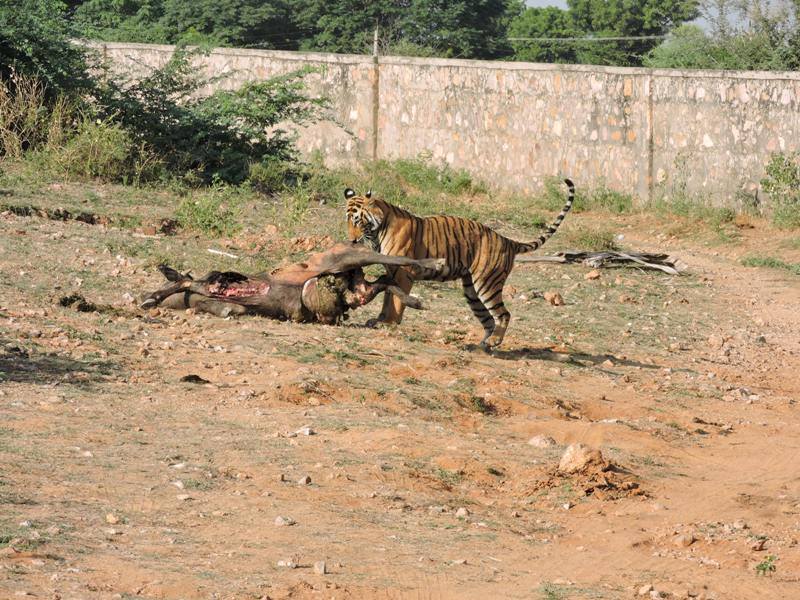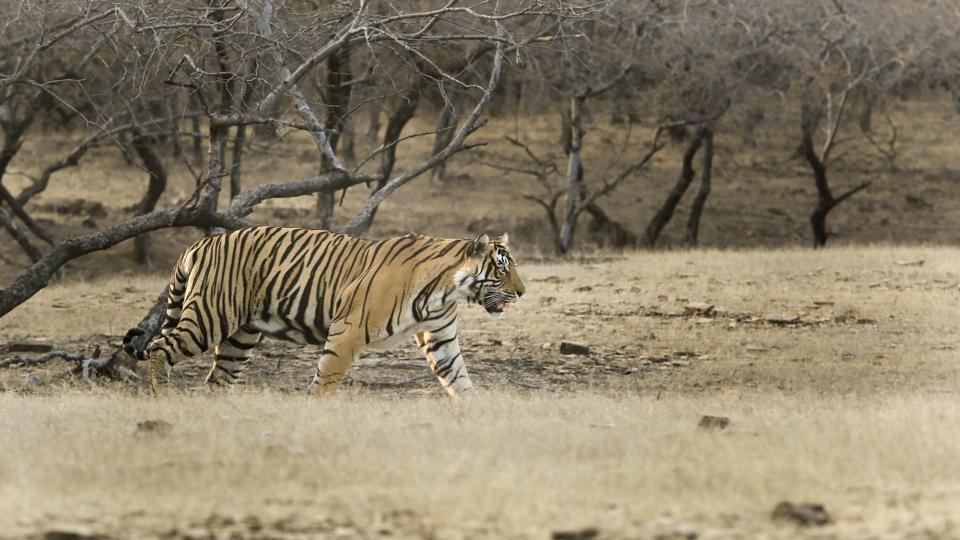Ranthambore Tiger Reserve is one of the most popular wildlife reserve forests in the world for the tiger conservation. The National Park of Ranthambore becomes the model center for the flagship program of India for the tiger protection in the country. From a few tigers to be counted on the fingers to becoming the third highest tiger density forest in India, the Ranthambore National Park is leading the tiger conservation campaign of the country. But, with the increasing population of the tigers, the Ranthambore forest is facing a new trouble of the territorial infighting of tigers. The forest department of Ranthambore has documented around eight incidents of the tiger infighting within the last few years for the territorial claim.
Due to the high population of the tigers in Ranthambore National park, the state forest department has decided to relocate two of the Ranthambore tigers in the Mukundra Hills tiger reserve at the end of this month. Soon, the thundering roars of a tiger couple of Ranthambore Tiger Reserve named Lighting and Cowboy will be echoed in the dense forest of the Mukundra Hills tiger reserve after the relocation. This will be the first such shifting of tigers in India to lower the density of the tigers in any wildlife territory. Earlier, the relocation of tigers has been done in India to repopulate the Tiger-less reserves such as the Sariska Tiger Reserve and Panna Tiger Reserve. But, it is the first ever relocation due to the overcrowding of the reserve, which leads to the infighting for the territorial claim.
The Ranthambore National Park has the third highest density of tigers in India after the Kaziranga National Park and the Corbett National Park. The park has more than 60 tigers in the area of around 392 sq km which is around 6.5 km per tiger. Whereas, an average territory size of a male tiger is 60 sq km and female tiger is 20 sq km. The deputy conservator of forests in Kota, S R Yadav said, “the idea is to provide a safe place to the Tigers because Ranthambore’s core area is now cramped.” The field director of Ranthambore, Y K Sahu said that the relocation, which will be in effect within two months, will lessen the density and help to ease the territorial pressure and infighting to an extent, and also allow larger genetic diversity.
 The two tigers, Lightning and Cowboy, lost their territories to the more powerful Tigers in territorial fights in the Ranthambore National Park and pushed out at the edge of the Park. It is hard to survive for a big cat at the fringe of a forest as the very low population of prey. Also, the Lightning and Cowboy, whose names were given by the local naturist guides, have the poor hunting skills making it worse for them to survive. So, the new habitat will be the best alternative for them to survive easily. In Ranthambore forest, tigers mark around 5-10 sq km of land as their territory and fiercely defend their territory. Tigers can only be pushed out of their territory by physically thrashed by any powerful big cat.
The two tigers, Lightning and Cowboy, lost their territories to the more powerful Tigers in territorial fights in the Ranthambore National Park and pushed out at the edge of the Park. It is hard to survive for a big cat at the fringe of a forest as the very low population of prey. Also, the Lightning and Cowboy, whose names were given by the local naturist guides, have the poor hunting skills making it worse for them to survive. So, the new habitat will be the best alternative for them to survive easily. In Ranthambore forest, tigers mark around 5-10 sq km of land as their territory and fiercely defend their territory. Tigers can only be pushed out of their territory by physically thrashed by any powerful big cat.
